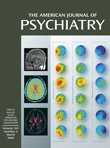To the Editor: For a psychiatrist unfamiliar with the specific criteria for posttraumatic stress disorder (PTSD) and acute stress disorder, there were two recent articles by Ruth A. Lanius, M.D., Ph.D., et al.
(1) and by Chris R. Brewin, Ph.D., et al.
(2) that were extremely enlightening. The first group reported that a husband and wife who experienced the same trauma had different emotional and physiological responses to it. They were seen and assessed 4 weeks after the trauma. Both met criteria for acute stress disorder and PTSD. The wife had a high score on the Peritraumatic Dissociative Experiences Scale, but both had low scores on the Dissociative Experiences Scale. They also had different responses to script-driven traumatic imagery, as measured by T
4 functional magnetic resonance imaging, heart rate, and self-reported measures.
The second article compared the diagnostic overlap between acute stress disorder and PTSD in victims of violent crimes. Ignoring the criterion for acute stress disorder that requires it to be of only 1 month’s duration, they found that 19% of the victims met the criteria for acute stress disorder and 21% for PTSD, which prominently overlapped. Both predicted an outcome of PTSD at 6 months. Could it be that in the first article the husband had typical PTSD and the wife had typical acute stress disorder (also with PTSD)? The husband did well with exposure-based treatment, but the wife did not and still had PTSD after 6 months. It could be, as Brewin et al.
(2) stated, that peritraumatic dissociation is a psychological process that impedes the processing of information during the trauma. Perhaps it requires a different treatment. I do not know what the preferred treatment is for acute stress disorder.
I believe that these two articles highlight a direction for future research in this area by emphasizing the likeness and differences of these two disorders, their different pathophysiologies, and their different responses to treatment. I am not sure how the treatments relate to the treatment currently being tested for another stress-related condition, complicated bereavement.
Certainly, with such similarities, it would be imperative for the committee working on DSM-V that deals with this category to consider the overlap of these two disorders and for those who do research in this area to consider them when explaining research findings. Where, for instance, do the animal models for response to stress best fit? Are these the same reaction with different gender responses, as the first article might imply? Since both conditions usually occur immediately after a stressor, maybe the word “acute” and the 1-month duration should be dropped from the criteria for acute stress disorder.
I thank both groups of authors for their interesting articles. The first article was provocative, and the second was informative because it further quantified the criteria for the two conditions.

